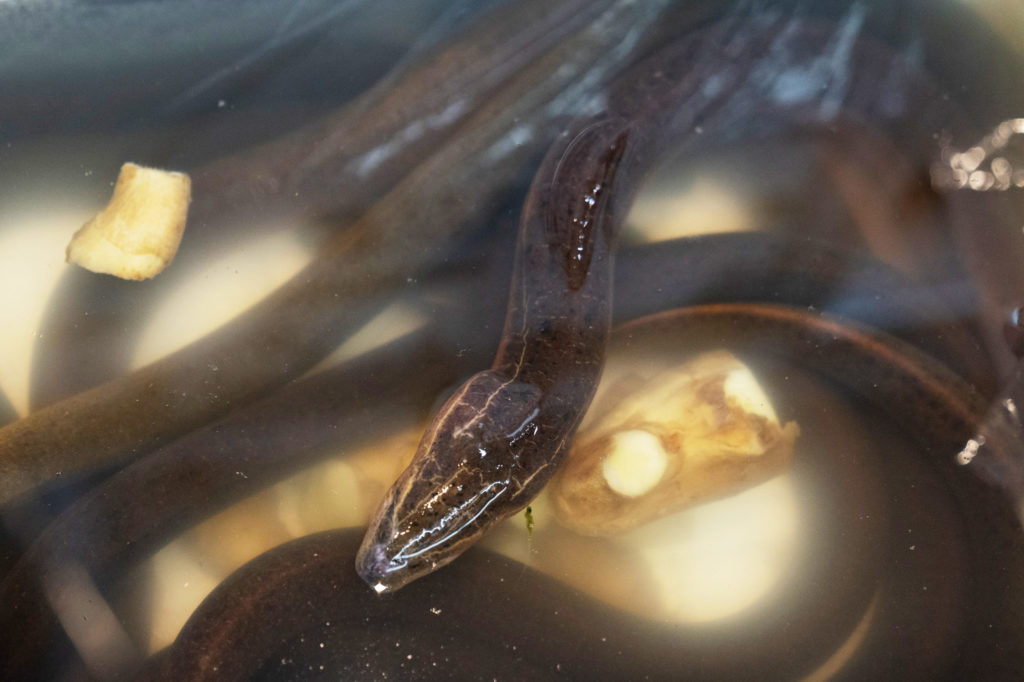‘Big pile’ of eels dumped in Prospect Park Lake could threaten local ecosystem

Asian swamp eels on display at a New York City fish market. Photo: Mary Altaffer/AP
Andrew Orkin was taking a break from his evening jog to sit by Prospect Park Lake when he turned around and was startled to see a tangle of wriggling snakes.
“And quite a big pile — fully alive,” said Orkin, a music composer who lives near the park.
They turned out to be eels that had escaped from one of two large plastic bags that split open as a man dragged them to the shoreline. After dumping the eels in the lake, the man walked away, explaining to bystanders that “I just want to save lives.”
